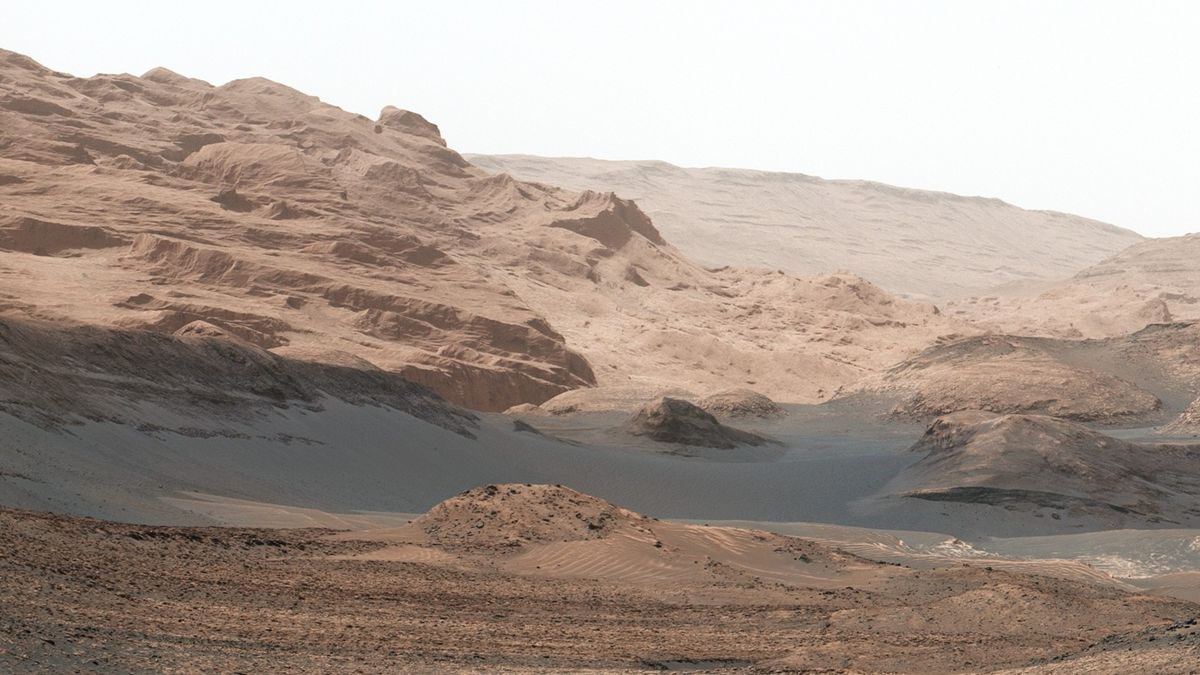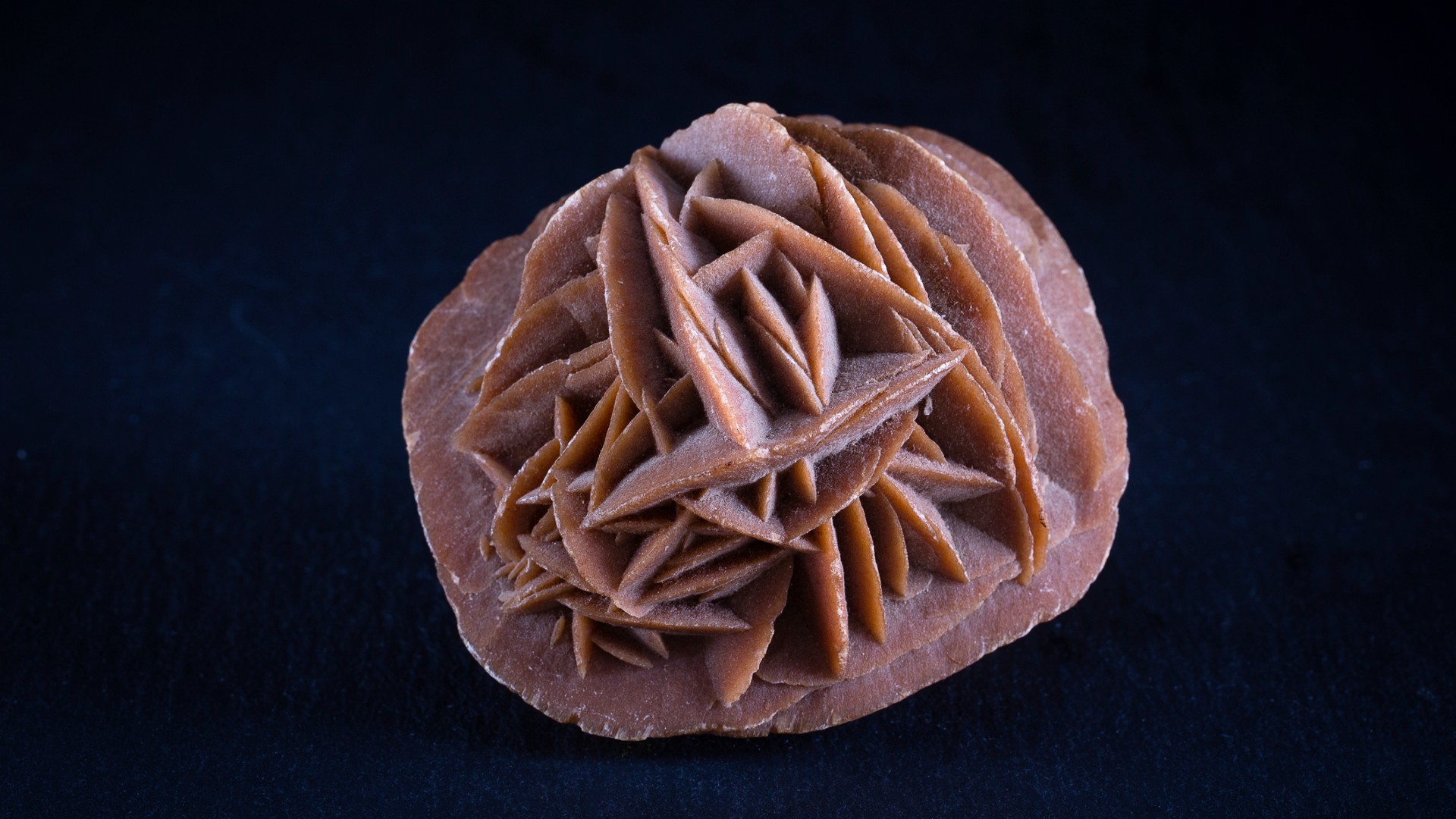
Researchers investigating the fossilized remnants of ancient microorganisms on Mars have gained valuable insights from a recent study of microbial fossils found in gypsum, a mineral formed during the desiccation of the Mediterranean Sea over five million years ago.
Mars was once home to abundant water bodies, including rivers, lakes, and even an ocean between approximately 4.1 and 3.7 billion years ago. Today, these water sources have disappeared, either frozen into polar ice caps, trapped as permafrost below the surface, or evaporated into the atmosphere and lost to the void of space. This evaporation process leaves sulfate minerals behind, similar to how evaporating rainwater results in sediment deposits.
Gypsum, one of these minerals, has been widely found on Mars and is recognized for its remarkable ability to preserve fossils, according to Youcef Sellam, a PhD candidate at the University of Bern. In a recent statement, he noted that it forms quickly, encapsulating microorganisms before they have a chance to decompose, thus safeguarding both biological structures and chemical indicators of life.
Sellam returned to Algeria to collect gypsum samples from the Sidi Boutbal quarry, an area that was once submerged in the Mediterranean Sea. Between 5.96 and 5.33 million years ago, tectonic movements closed what is now the Strait of Gibraltar, temporarily isolating the Mediterranean from the Atlantic Ocean and causing it to nearly dry up. This event left behind extensive deposits of salt and sulfate minerals, including gypsum, in conditions reminiscent of today’s Martian lake and river beds.
“These deposits serve as a valuable terrestrial analog for Martian sulfate formations,” Sellam remarked.
Using a compact laser-powered mass spectrometer selected for its compatibility with spacecraft design, Sellam analyzed the gypsum-rich samples. This technology could potentially be utilized in forthcoming missions to the Red Planet.
“Our laser ablation ionization mass spectrometer, designed for space flight, is capable of effectively identifying biosignatures in sulfate minerals,” Sellam explained. “This technology may be deployed in future Mars rovers or landers for in-situ analyses.”
The laser, when directed at the sample, vaporizes the surface material, generating plasma — a cloud of ionized particles. A microscope then analyzes this plasma to identify the molecular constituents.
Sellam discovered elongated, twisted microscopic strands that had previously been classified as microbial fossils from sulfur-oxidizing bacteria.
These fossilized samples were enclosed by clay minerals alongside dolomite and pyrite, a notable combination. Dolomite can dissolve in acidic environments, and Mars is thought to have harbored such acidic waters. If prokaryotic microorganisms (simple, single-celled life forms without a defined nucleus or membrane) existed on ancient Mars, they might have played a role in increasing the alkalinity of their surroundings, aiding in the formation of dolomite. Moreover, prokaryotes can expedite clay formation.

While Sellam knew the types of microbial fossils he could discover in the Algerian gypsum, identifying Martian microbial fossils may prove more challenging due to their alien nature, which might make them hard to differentiate from natural rock formations. However, any structures resembling fossils encased in gypsum, particularly alongside clay and dolomite, would strongly suggest a biological origin due to the established link between these minerals and life.
“Our results establish a methodological foundation for detecting biosignatures in Martian sulfate minerals and could guide future Mars exploration missions,” said Sellam.
Future Mars missions should focus on identifying dolomite and clay within gypsum-rich Martian samples, as these findings could offer significant clues about potential ancient life on the Red Planet. However, Sellam emphasizes that there is still much work ahead before this approach can be deemed fully reliable.
“Although our findings strongly support the biogenic nature of the fossil filaments in gypsum, the challenge remains to distinguish genuine biosignatures from abiotic mineral structures,” he noted. “Implementing an additional detection method would enhance the confidence level regarding life detection. Furthermore, Mars’ unique environmental conditions could influence biosignature preservation over geological timescales. More research is necessary.”
Sellam is thrilled to have spearheaded “the first astrobiology study to involve Algeria” and views his findings as significant progress in the search for life on Mars.
Such advancements may come to fruition soon. The next rover mission targeting the Red Planet is the European Space Agency’s Rosalind Franklin rover, slated to launch before the decade concludes. This rover will be equipped with various mass spectrometers designed to analyze Martian mineralogy and search for signs of ancient microbial life.
Additionally, NASA’s Perseverance rover has collected samples that will eventually be transported back to Earth for comprehensive analysis, with hopes to achieve this within the next decade.
Sellam’s research was published on February 25 in Frontiers in Astronomy and Space Sciences.









